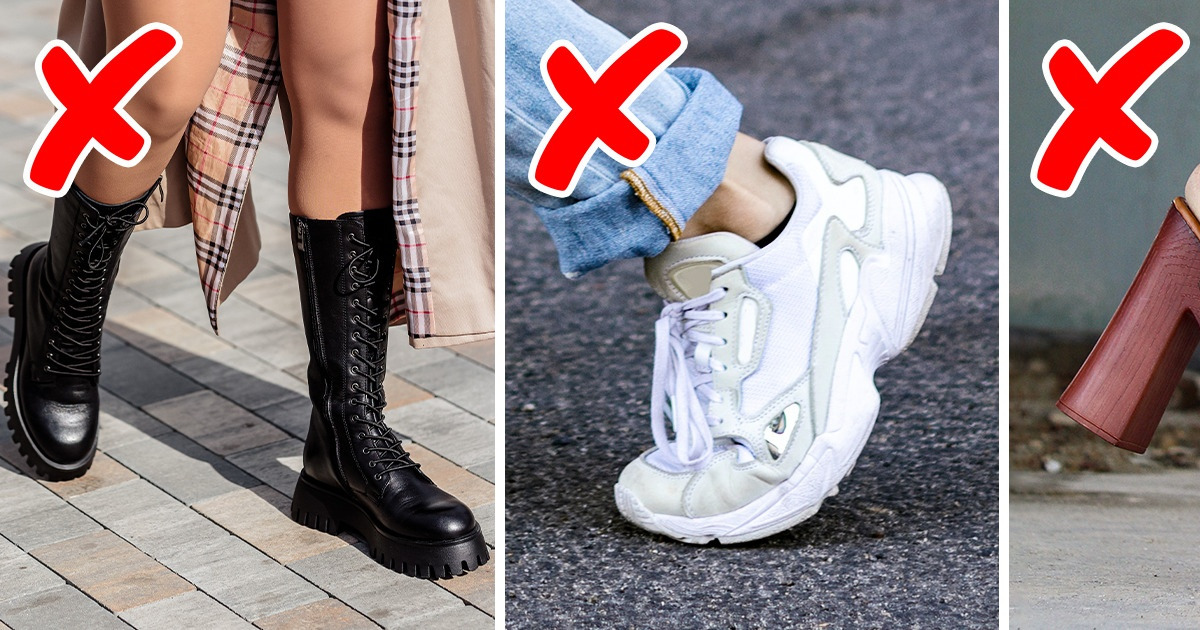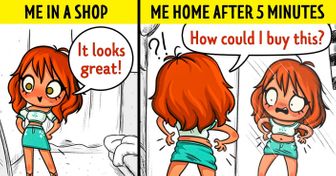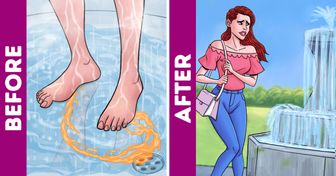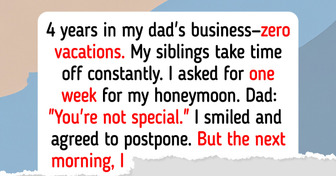18 Women Who Weren’t Afraid of Radically Changing Their Hair and Now Look as Stunning as Ever


Oftentimes, in pursuit of trends and spectacular footwear, we forget about other important nuances before making the purchase, like whether the material is durable, how easy it is to take care of, and, the main thing, whether the footwear is comfortable or harmful to our feet.
We at Bright Side decided to critically assess some popular footwear models and found many important factors that tend to take back the joy of getting a new item soon after buying it.
When searching for comfortable, high-quality footwear for the cold season, buyers often opt for suede — perhaps due to its nice look or breathable and soft-to-the-touch material. At the same time, we forget that this fabric is quite fickle with environmental factors, especially if the boots are light in color. Suede gets dirty very easily, absorbs moisture, and gets covered with stains that are hard to get rid of.
The problem with canvas sneakers is actually the same — the fabric, especially when it’s light in color, requires constant and thorough care because it attracts a lot of dirt. Cotton is believed to be the most difficult to take care of.
The other issue lies in the flat sole that lacks any ergonomics. According to experts, constant use of such footwear is linked to serious health risks and can lead to the development of different foot and joint problems.
In addition to the aforementioned issues associated with the fickleness of the fabric, in the case of these boots, the nuances are hidden in the type of footwear itself. Indeed, long, tight-fitting boots look great in photos and can complement a festive look. However, if we talk about using these boots on an everyday basis, this item is absolutely impractical, as it can be combined with a very limited number of clothes, mainly dresses, and skirts. And if the latter is not a part of your lifestyle or clothing preference, there is a big risk of getting disappointed with this purchase.
High-heeled flip flops pose one big issue — they combine the disadvantages of both high heels and flip flops. The problem with standard flip flops is that they don’t have back support that keeps the feet in the shoes, due to which, a person starts to bend the toes abnormally, trying to grasp the shoes.
High heels, in their turn, put the feet in an unnatural position, and they become unstable. It’s easy to guess why the combination of these factors is what causes these different types of tension, increasing the risk of developing unwanted consequences.
It is known that faux leather and other synthetic materials are quite susceptible to flaking and peeling on their exterior. Even a smooth material without unnecessary details can deform over time and quickly lose its presentation due to moisture and mechanical stress. The danger of perforated shoes (with holes), in this case, is that any moisture that gets into these holes and seams causes the top layer to swell even faster.
It might seem that such shoes are an advanced version of flip-flops and are safer to wear because there is a slingback or straps that keep the feet in the shoes and provide some support. But, unfortunately, this is still not enough because a serious issue hidden in an absolutely flat sole is still there. It doesn’t ensure the correct positioning of the foot arch when walking. In addition, such shoes often have a pointed toe, which carries the risk of inflammation and pinched nerves.
There is a common belief that Uggs are worse than “moon-walker” boots because the latter are often made of nylon material, which is more waterproof. However, it’s not that simple.
Firstly, due to their oversized construction, they are uncomfortable for lots of walking. This option is better for a ski resort, for instance. Secondly, the inner polyester insulation doesn’t breathe, and the feet start to sweat and freeze quickly. Thirdly, the waterproof qualities of this footwear are not that great, as these boots absorb moisture at a slow pace.
Summer shoes with minimalistic straps do look elegant, indeed. However, walking in them is quite hard. The heels put the feet into an uncomfortable position, even if the model is closed and provides foot support.
Open shoes don’t have any support whatsoever. Eventually, the gait becomes unsteady, and the feet slip forward, which creates excessive stress in the balls of the feet. Straps, in their turn, squeeze the feet, causing problems with blood circulation.
Rough boots with lacing and massive soles look bold and seem quite comfortable, but this is not absolutely true. Heavy soles force the muscles to work harder, which can lead to sprains. In addition, due to their heavy weight, we are compelled to lace them tighter than usual, which greatly restricts movement and interferes with the natural, flexible movement of the feet and legs, which can lead to pain.
Finally, excessive tension created by lacing can cause the material to peel off fairly quickly on faux leather models.
People with feet issues pay special attention to amortization when choosing shoes. But as strange as it might sound, opting for flexible, soft shoes can sometimes bring more harm than good. So-called “memory effect” filling, which creates the feeling of walking on a cloud when they’re first put on, can “remember” the wrong gait style, which will lead to worsening the pain. The same thing applies to ultrasoft and flexible soles.
In order not to harm yourself, it is better to consult a doctor to check if you have any serious foot issues. After all, an orthopedist may recommend wearing stiffer shoes or stabilizing the insoles after hearing your complaints.
Do you agree with the aforementioned cons? What other footwear, in your opinion, can harm our feet and cause too much unnecessary trouble?











